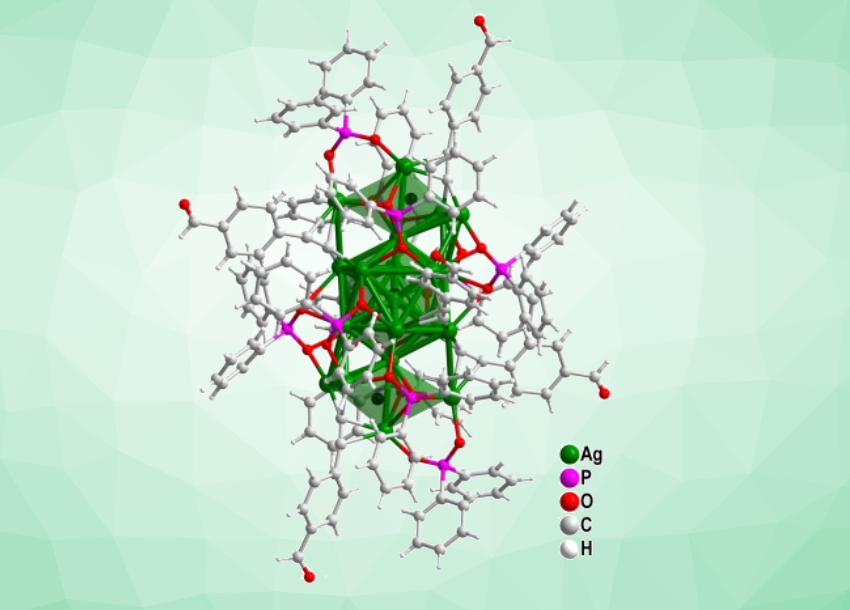Metal nanoclusters with atomically precise structures are interesting for a variety of applications, e.g., in nanomaterials, catalysts, therapeutic agents in medicinal chemistry, or sensors. Ligands around the nanoclusters can be used to introduce different functionalities. While there are known surface-functionalized gold nanoclusters, preparing silver nanoclusters with functional sites has proven to be more challenging. However, for practical applications, methods for the large-scale synthesis of stable nanoclusters would be required.
Zong-Jie Guan, Tsinghua University, Beijing, China, and Hunan University, Changsha, China, Quan-Ming Wang, Tsinghua University, and colleagues have synthesized a stable silver nanocluster with multiple surface aldehyde groups, [Ag21(Ph2PO2)10(p-CHOPhC≡C)6]SbF6 (pictured). The aldehyde groups allow for postsynthesis modifications. The team started from the precursors Ph2PO2Ag and p-CHOPhC≡CAg, which were subjected to a direct reduction using Ph2SiH2 in the presence of AgSbF6 and NEt3 in dichloromethane (DCM).
The synthesis can be performed on a gram scale with a yield of 88 % (based on Ag), and the product is stable for months under ambient conditions. The prefunctionalized nanocluster can be further transformed under mild conditions using the aldehyde groups, e.g., via reactions with amines. According to the researchers, the work represents the first effective one-pot method for the synthesis of functional silver nanoclusters in high yield.
- Large Scale Synthesis of a Stable Prefunctionalized Silver Nanocluster,
Rui-Lin He, Feng Hu, Zong-Jie Guan, Quan-Ming Wang,
Angew. Chem. Int. Ed. 2024.
https://doi.org/10.1002/anie.202410827




